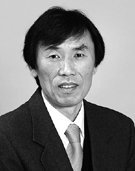Korea’s export machine is faltering, causing concerns about the future of the Korean economy.
Exports have long been the engine of Korea’s economic growth. Not anymore. Since the third quarter of 2014, exports have become a drag on it.
 |
| Yu Kun-ha |
In the July-September period of this year, the economy expanded by a robust 1.2 percent on quarter on the back of a rebound in domestic demand. But exports’ contribution to this was minus 0.7 percentage point. The growth rate could have been much higher had exports not shrunk.
The October trade data was more alarming, as outbound shipments posted a whopping 15.8 percent plunge from a year before, the sharpest fall since August 2009, when Korea’s exports plummeted more than 20 percent amid a global financial meltdown.
The steep fall in October amplified jitters, as it was seen as indicating that exports were contracting faster. To allay the anxiety, Ahn Jong-beom, senior presidential secretary for economic affairs, came forward with an explanation.
Ahn said the unusually sharp drop was due mainly to a high base effect. In October last year, the nation shipped $51.8 billion worth of goods and services abroad, a record monthly performance. This simply made the drop look sharper.
Ahn sought to reassure the public by saying that Korea was not the only country suffering negative growth in exports. Since oil and other commodity prices began to plunge after October last year, many countries have been experiencing a similar phenomenon. He added that Korea had been faring relatively well compared with other advanced countries.
Ahn’s explanation was true, but it did not offer much comfort because it failed to refer to more important reasons for Korea’s sluggish exports.
Korea’s export growth had been slowing over a long period of time before turning negative. The main reason for the decline is the gradual erosion of Korea’s competitiveness in major export industries.
Korea’s present export mainstays are not much different from those of 10 years ago. Korean companies have failed to create or muscle into any new high-growth export industries.
But during this period, Chinese companies have rapidly narrowed the gap in competitiveness in many of Korea’s key export industries.
The problem is that the prospects for Korean exporters are not bright in light of the speed at which their Chinese rivals are catching them up. In some industries, Chinese firms are already ahead of Korean exporters.
To make matters worse, the global economy, together with the Chinese economy, is forecast to enter a prolonged period of slower growth, worsening the business environment for Korean exporters.
If exports remain in the doldrums, it is hard to expect a strong recovery of the national economy because domestic demand-oriented industries are not powerful enough to drive the economy forward on their own.
To arrest the continuing decline in economic growth, Korea needs a powerful export machine based on strong manufacturing industries. So then, how can the nation sharpen the competiveness of its major export industries?
The government does not seem to have an answer to this question. President Park Geun-hye’s “creative economy” vision is more about fostering start-ups than about improving overall export competitiveness.
She has forced the nation’s largest business groups to finance the operation of regional creative economy centers and cultivate local start-ups.
But the vision has no specific initiatives aimed at bolstering the competitive edges of companies in such key export industries as petrochemicals, shipbuilding and steelmaking, which face strong challenges from China.
To remain strong in major export industries, Korean companies have to become market leaders. This means they have to throw away the “fast follower” business strategy that they have thus far adhered to.
They need to abandon the “catch-up” model of innovation and adopt a more creative approach. Regarding this matter, Seoul National University’s engineering faculty has recently presented a set of suggestions that deserve keen attention.
In a book titled “Time for Accumulation,” the 26 professors of SNU’s College of Engineering suggest that the fundamental reason for Korea’s declining industrial competitiveness is that Korean companies lack what they call “conceptual design capabilities.”
A conceptual design refers to a description of how a new product will work and meet its performance requirements. But by conceptual design capabilities, the professors mean the ability to present a creative way of approaching a given task, whether be it the development of a new product or the creation of a new business model, by analyzing the problem from a fresh perspective.
The professors note that Korea has achieved industrial growth largely by imitating or adapting conceptual designs created in advanced countries. But as this strategy has run its course, Korea now has to develop the ability to create new products based on conceptual designs of its own.
But the problem is that this ability cannot be acquired overnight. The professors say companies can secure this ability only through a process of trial and error over a long period of time. They call this process “creative accumulation.”
Creative conceptual designs, they suggest, do not come from sparkling ideas but from accumulated experiences of failure. This reminds us of Google’s failure imperative, the notion that you must fail first to succeed in developing new products.
The professors emphasize that any attempt to bolster Korea’s industrial competitiveness should start with the realization that there is no shortcut to developing conceptual design capabilities.
As such, they suggest that Korea builds a new innovation paradigm based on creative accumulation. This calls for changing everything from corporate strategy to university education and government policy for technology development. Policymakers need to heed their prescriptions.
By Yu Kun-ha
Yu Kun-ha is the editor in chief of The Korea Herald. He can be reached at khyu@heraldcorp.com. – Ed.



